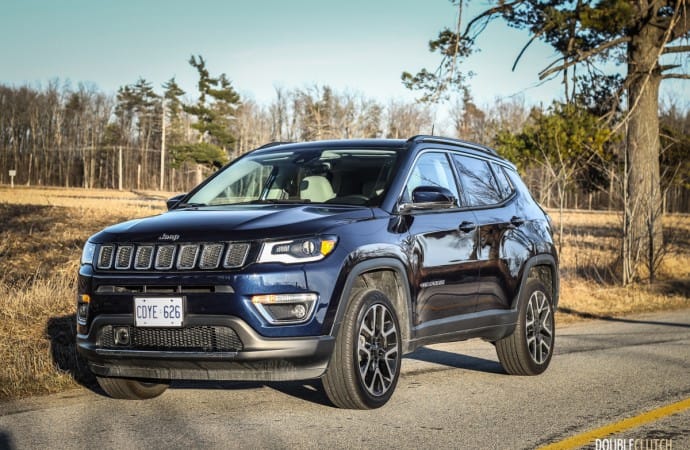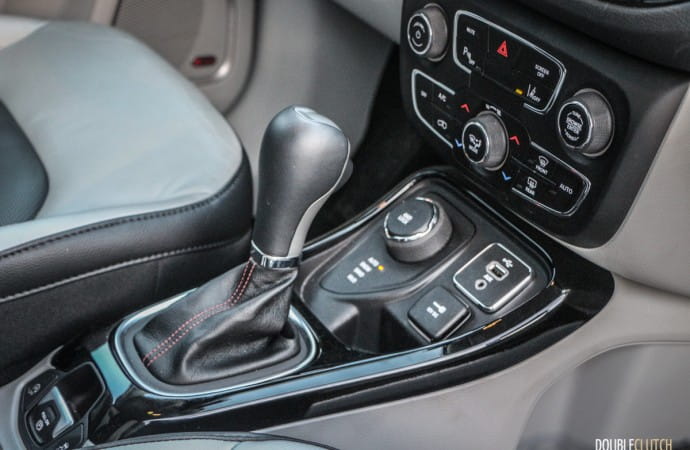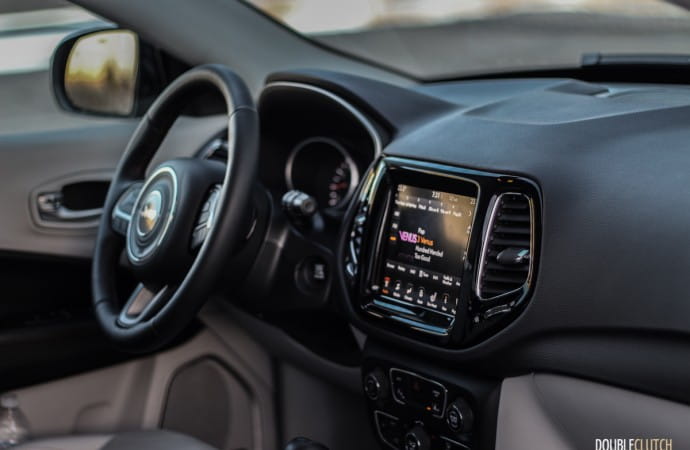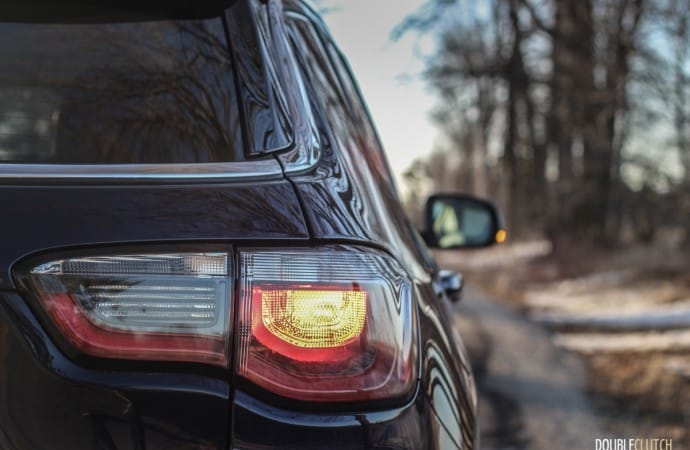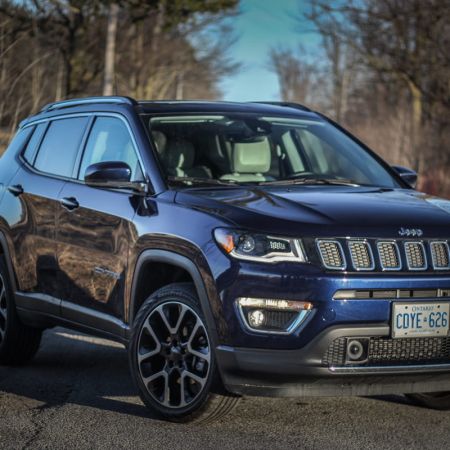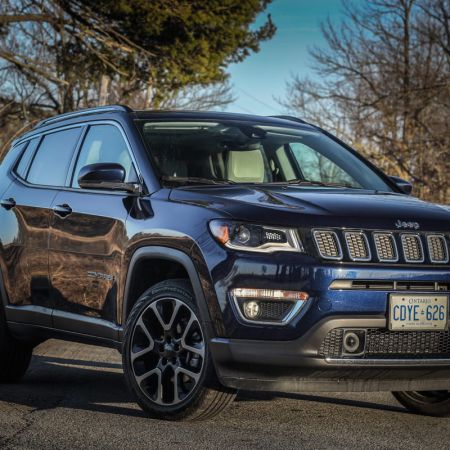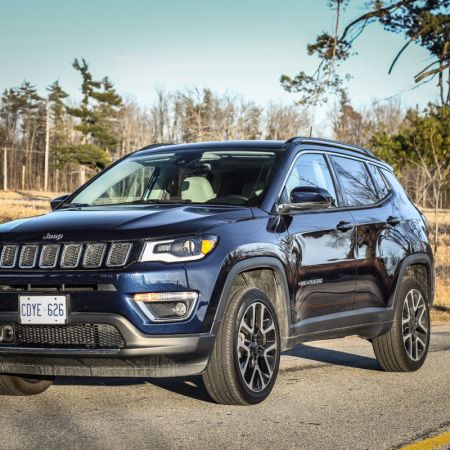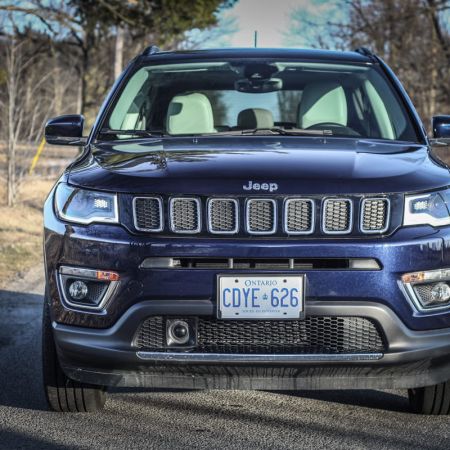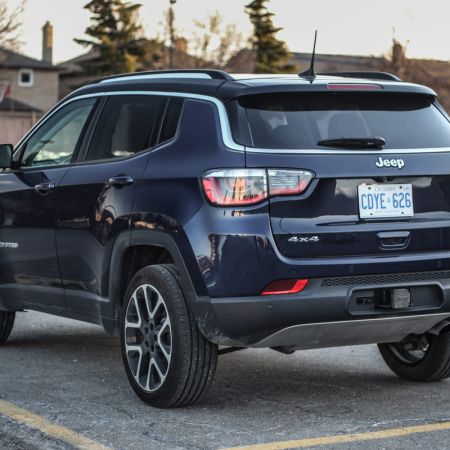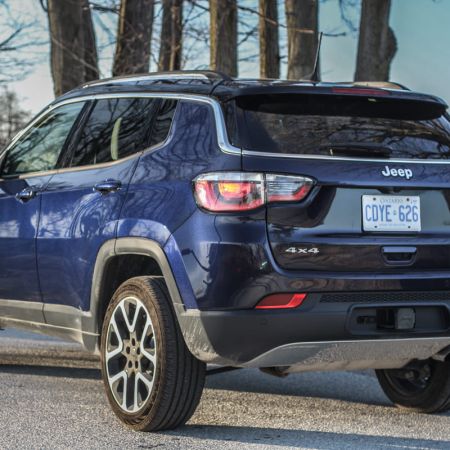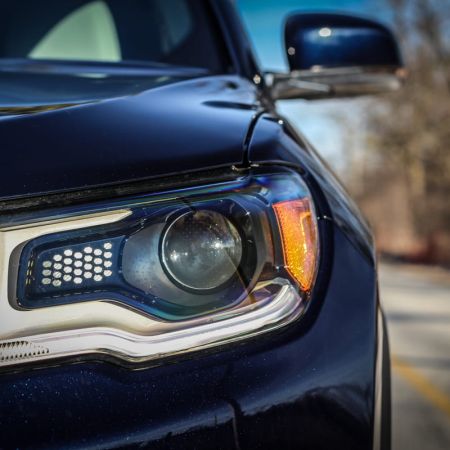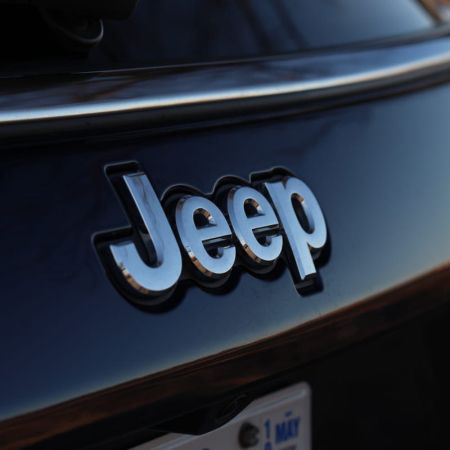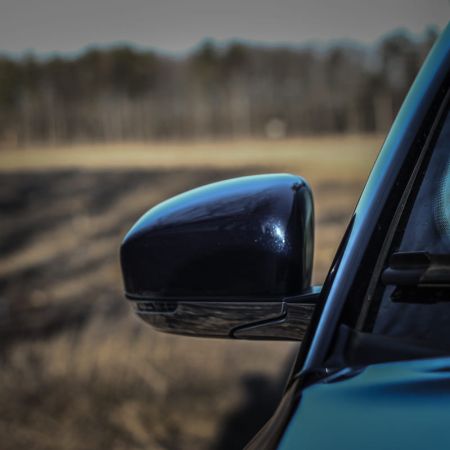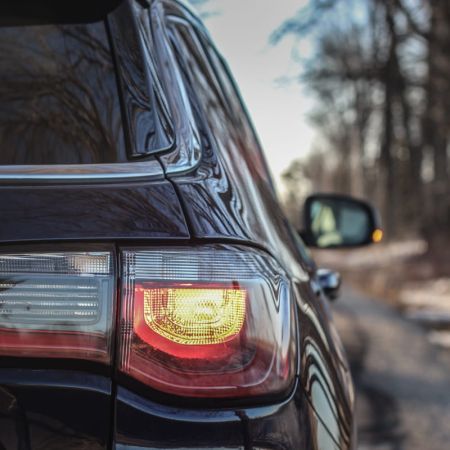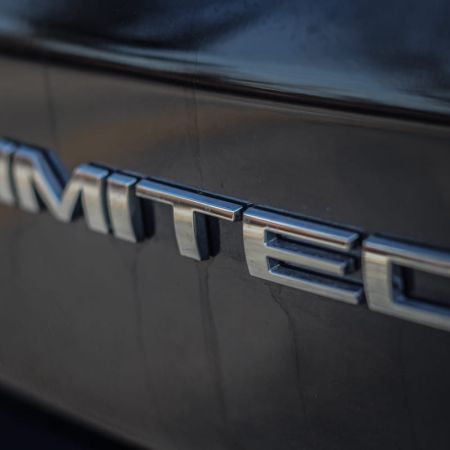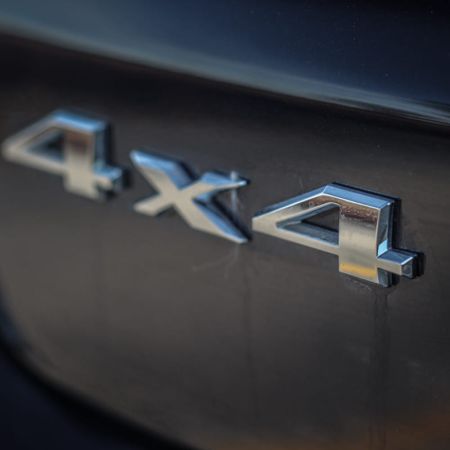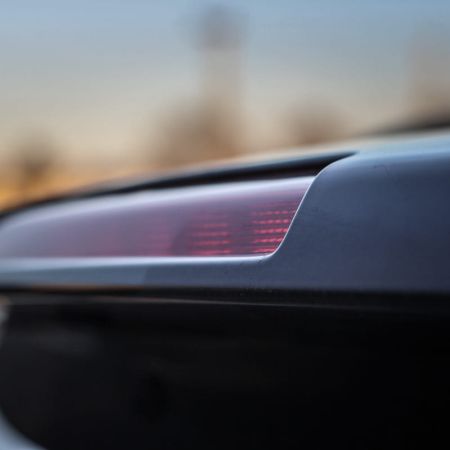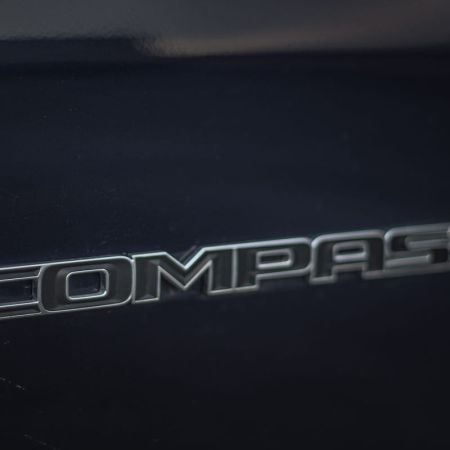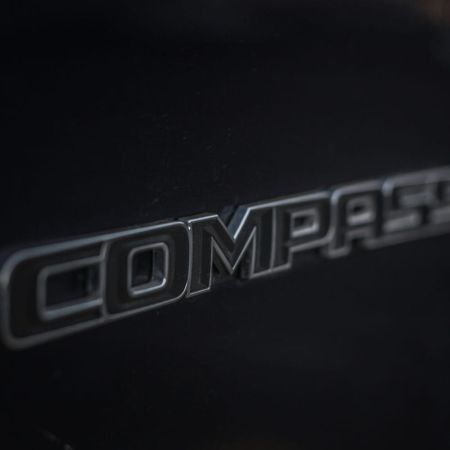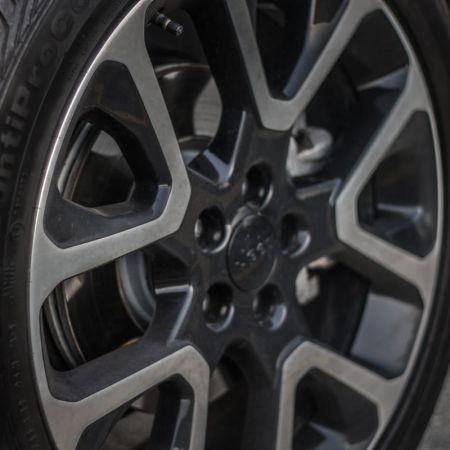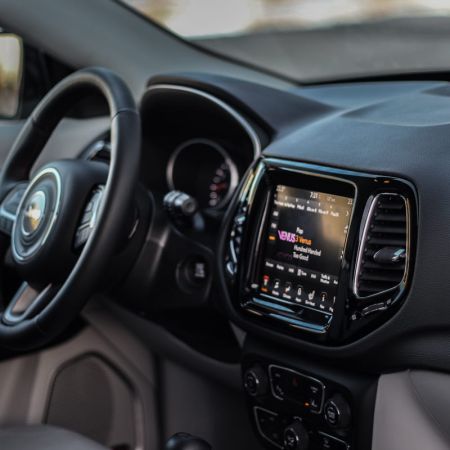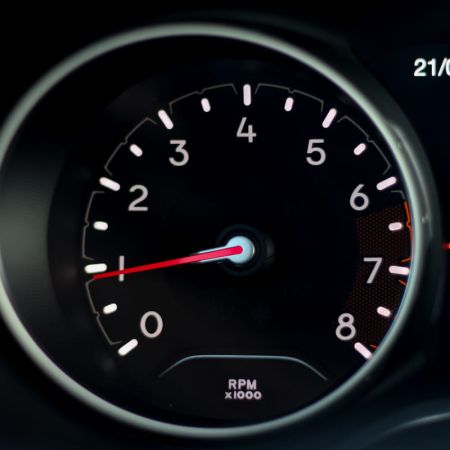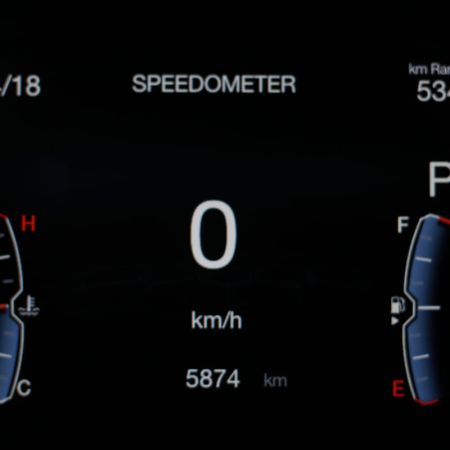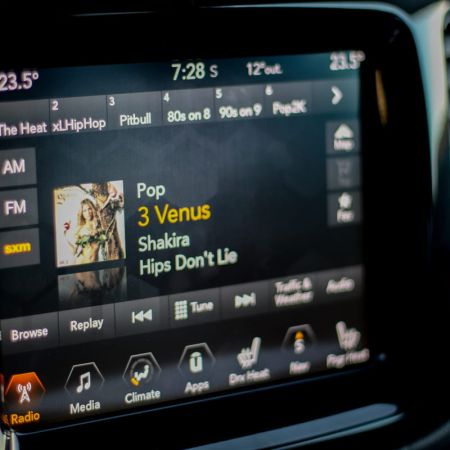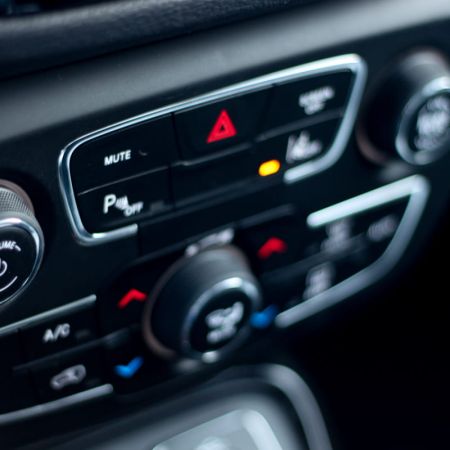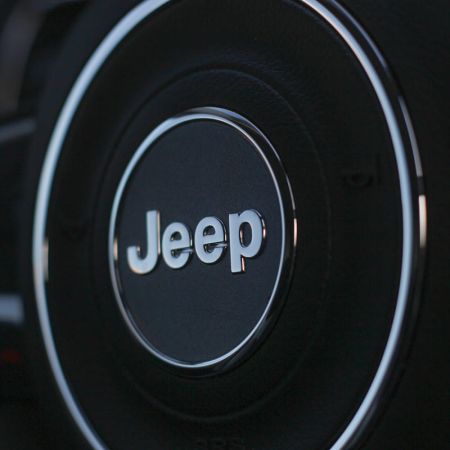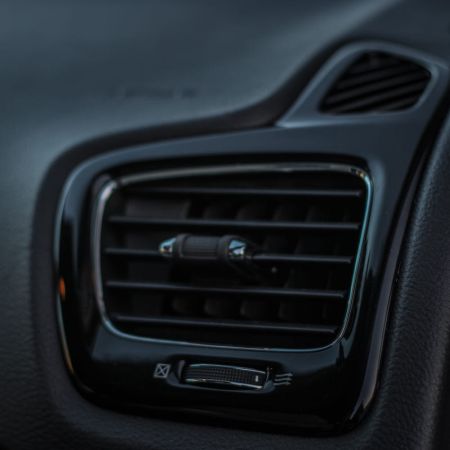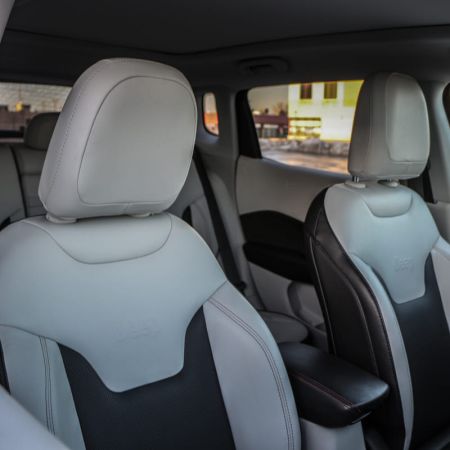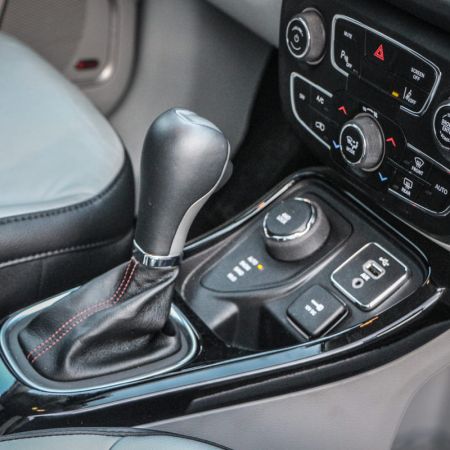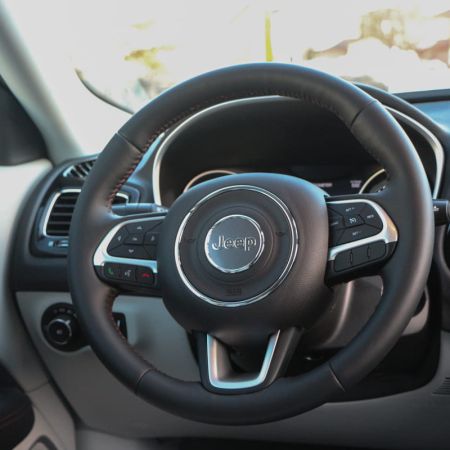Straying completely from a platform that once shared its underpinnings with the Dodge Caliber, the second-generation Jeep Compass now loosely shares its chassis with the smaller Renegade. This model, new for 2017, has done away completely with the cheap interior bits and lackluster driving dynamics that the first-generation model was plagued with. The 2018 Jeep Compass Limited tested here now looks a lot like its bigger brother, the Grand Cherokee (reviewed here). It shares its attractive front fascia with seven-slot Jeep grille, larger wheels, and impressive attention to detail with the larger and extremely competent offering from Jeep.
Sitting in the compact crossover segment, the Compass has some strong contenders to fight. The Honda CR-V (reviewed here), Ford Escape, and Nissan Rogue are all softer and more family-oriented entries that sell very well. The Compass takes a slightly different approach and uses its Jeep pedigree and Fiat-Chrysler’s marketing dollars to cater to a younger and more active lifestyle, one that would warrant the need for a crossover that’s capable of tackling some mild off-roading should the need or occasion arise.
Found under the hood of the new Compass is a 2.4L Tigershark MultiAir inline four-cylinder engine, good for 180 horsepower at 6,400RPM and 175 lb-ft. of torque at 3,900RPM. This engine has been seen before in other FCA offerings, and has proven itself to be competent. It’s paired to a nine-speed ZF automatic transmission that’s not anywhere near as good as the eight-speed offered in the Grand Cherokee, but does an adequate job of smoothly shifting and helps with fuel economy.
When driving around the city, the 2.4L is eager and fairly responsive; definitely more urgent than the small turbocharged pot in the CR-V or the Eclipse Cross (reviewed here). It does tend to run out of breath at higher speed passes, but even on the highway it has more than enough gusto to keep up with traffic without any effort. Some mild tuning to the transmission mapping would go a long way to improving overall response, as the Compass does tend to hunt for gears when trying to kick down and quickly make a pass.
The Compass with 4×4 and the nine-speed automatic is rated for 10.8L/100km city and 7.8L/100km highway, for an overall consumption rating of 9.5L/100km. It’s also equipped with an idle stop/start feature to save as much fuel as possible, but we found this system to be quite rough and slightly finicky, opting to turn it off for the most part. Our observations over approximately 500km of mixed driving returned 9.8L/100km, right in line with the ratings. This crossover is also rated to run perfectly fine on 87-octane regular fuel.
It’s worth mentioning that the Compass’ 4×4 system stays in front-drive mode for the most part, and will only send power to the rear wheels when slip is detected. While this does have an impact on overall capability, the reality is that most Compass buyers won’t be tackling the Rubicon Trail, rather relegating the vehicle to Costco duty on weekends and the occasional off-road venture up a back road to the cottage. Four-wheel independent suspension ensures a compliant ride that keeps the crossover well sorted on all road surfaces. A slightly beefier Trailhawk version is available if you need your Compass to be a little bit more hardcore.
Perhaps the most significant improvement to the new Compass is seen from the driver’s seat. The interior is a vast improvement over the last model, with soft-touch materials in most areas. Some plastics are definitely visible, as this Jeep is built to a lower entry-level price point, but it’s very nice overall. Jeep has carried over the traditional dashboard layout, which is one of the better examples in the industry. Interior space is quite good, and the Compass will accommodate up to four adults in decent comfort, with adequate visibility all around.
The driving position is also quite agreeable, with well-bolstered seats that kept us comfortable for the duration of our test. Our Compass was fitted with an 8.4” Uconnect touchscreen, now featuring Apple CarPlay and Android Auto connectivity. This system is one of the best in the business and we have come to genuinely appreciate all of the subtle updates that FCA has rolled out in recent years. The physical buttons for climate control and volume are a great touch, and the response time of the system is excellent.
Competitively priced in its class, the 2018 Compass starts at a low $25,250 for the base Sport model. Stepping up to the North will bring you to the model most Canadians will buy, at a reasonable $28,745. Sitting atop the Compass line can have you go in two directions; either the off-road worthy Trailhawk at $33,245 or the $$35,245 Limited tested here for those who crave that bit of upscale feel. This car also had some additional features such as navigation, a Beats audio system, and a few more miscellaneous items which brought the cost up to $42,095, but that’s not reflective of what buyers will actually opt for – moreso a showcase of all that the Compass can actually offer.
Effectively a smaller version of the Grand Cherokee on a stricter budget, the 2018 Jeep Compass Limited brings capability and some added style to the rather-beige compact crossover segment. It isn’t the most luxurious in its class, but it does stay true to the Jeep philosophy though. A competent cruiser on the highway, a fun runabout in the city, and capability of tackling a mud trail with ease means the Compass has a slight edge over many of its rivals. For many, the Compass is the sweet spot as it offers better on-road manners than a Wrangler without needing to step up to higher price points for its larger siblings.
See Also:
2018 Jeep Wrangler Unlimited Sahara



